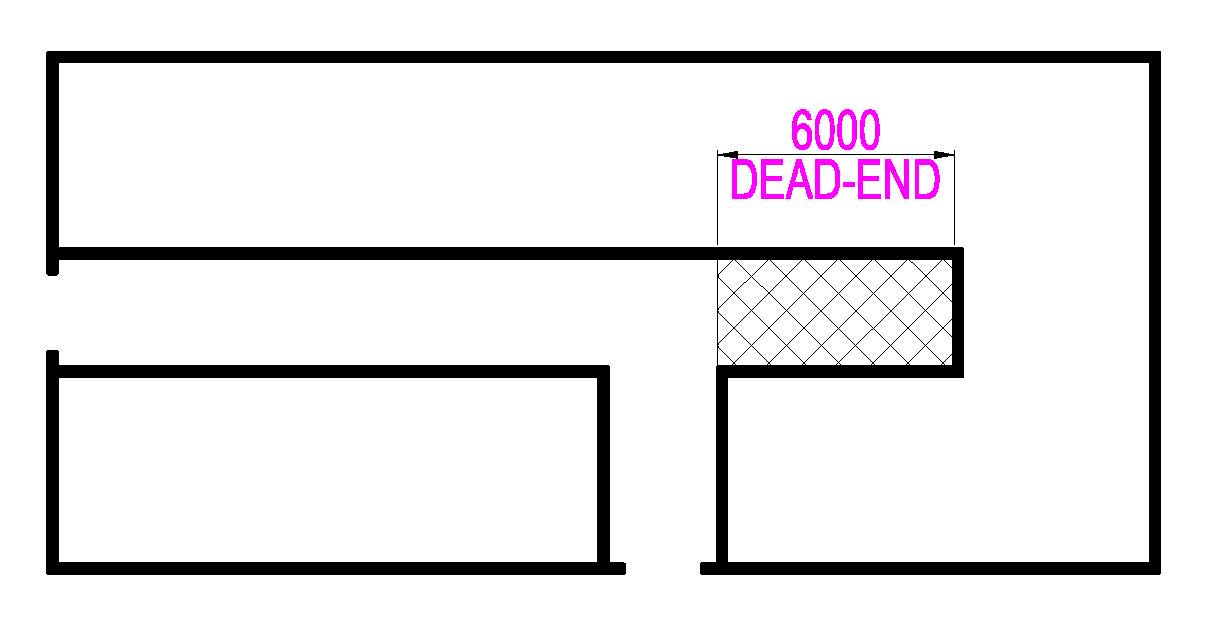| OCCUPANCY TYPE (new building) |
CODE REF. | DEAD-END |
| AMBULATORY (Not Sprinklered) |
(20.2.5 AND 38.2.5.2) | 6 m. |
| AMBULATORY (Sprinklered) |
(20.2.5 AND 38.2.5.2) | 15 m. |
| ASSEMBLY (Sprinklered and Not Sprinklered) | (12.2.5.1.3) | 6 m. |
| BUSINESS (Not Sprinklered) |
(38.2.5.2.2) | 6 m. |
| BUSINESS (Sprinklered) |
(38.2.5.2.1) | 15 m. |
| HEALTHCARE (Sprinklered and Not Sprinklered) |
(18.2.5.2) | 9 m. |
| EDUCATIONAL (Not Sprinklered) | (14.2.5.2) | 6 m. |
| EDUCATIONAL (Sprinklered | (14.2.5.2) | 15 m. |
| ONE & TWO FAMILY DWELLINGS |
(-) | No Requirement |
| HOTELS AND DORMITORIES (Not Sprinklered) |
(Table A.7.6) | 10.7 m. |
| HOTELS AND DORMITORIES (Sprinklered) |
(Table A.7.6) | 15 m. |
| APARTMENTS (Not Sprinklered) |
(Table A.7.6) | 10.7 m. |
| APARTMENTS (Sprinklered) |
(Table A.7.6) | 15 m. |
| MERCANTILE (Not Sprinklered) |
(Table A.7.6) | 6 m. |
| MERCANTILE (Sprinklered) |
(Table A.7.6) | 15 m. |
| STORAGE (Sprinklered and Not Sprinklered) |
(Table A.7.6) | 15 m. |
| STORAGE |
(Table 42.2.5) | (see Table 42.2.5 for Arrangement of means of exit) |
| INDUSTRIAL |
(Table 40.2.5) | Refer to Table 40.2.5 |
A dead end exists where an occupant enters a corridor thinking there is an exit at the end and, finding none, is forced to go back to the path traveled to reach a choice of exit paths.


Exception {IBC 1017.3 (3)}
A dead-end corridor shall NOT be limited in length where the length of the dead-end corridor is less than 2.5 times the least width of the dead end corridor
Notes:
- Code Reference used is NFPA-101 2012 edition unless otherwise noted.
- These information is not complete and intended to be used as quick references only, always refer to NFPA or your local codes for complete information.